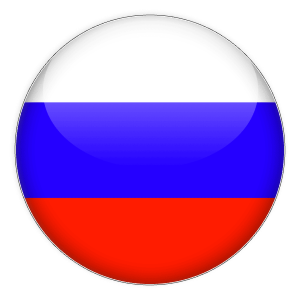USEFUL INFORMATION
ABOUT THE COUNTRY
India is a land of contrasts, where ancient traditions coexist alongside modernity, where colorful festivals and majestic monuments represent their amazing stories. From its diverse cuisine, rich with the aromas of spices, to picturesque natural landscapes and ancient temples, India offers unique experiences at every step.

- Official name: the Republic of India
- Capital: New Delhi
- Ranks first in the world in terms of population and seventh in terms of territory
- Population: ~ 1.4 billion people
- Area: ~ 3.3 million sq km
- Political system: A federal parliamentary republic divided into 28 states and 8 union territories
- Religion: More than 900 million Indians adhere to Hinduism (80.5%); Islam (13.4%), Christianity (2.3%); Sikhism (1.9%); Buddhism (0.8%); Jainism (0.4%); Judaism; Zoroastrianism; Bahá'í; animism.
- Top 10 largest cities in India: Mumbai, Delhi, Bangalore, Hyderabad, Ahmedabad, Chennai, Kolkata, Surat, Pune, Jaipur.

The Indian population comprises numerous ethnic groups including Indians, Bengalis, Punjabis, Tamils, Gujaratis, Marathis, and others.
Officially recognized languages of India include Hindi, English, Bengali, Telugu, Marathi, Tamil, and others.
Officially recognized languages of India include Hindi, English, Bengali, Telugu, Marathi, Tamil, and others.
However, beyond these languages, a multitude of dialects is used in various regions reflecting the ethnic diversity of the Indian population. They speak over 600 languages and more than 1000 dialects derived from them.
Northern India predominantly speaks Hindi, while in the South, Tamil, Telugu, and other Dravidian languages prevail. Bengali is spoken in the eastern regions, and Marathi and Gujarati are widespread in Western India. Some states also use regional official languages such as Assamese, Kannada, and Urdu.
Wherever you go in India, you will encounter a diversity of languages that serve as visual and auditory reflections of the multifaceted culture of this incredible land.

The culinary masterpieces of Indian cuisine are renowned for their diversity of flavors, aromas, and spices. Food in India can be both spicy and sweet, often served with various types of bread and rice.
- Curry is a general term for many dishes seasoned with various sauces and spices. Vegetables, fish, meat, or cheese can be added to curry.
- Tandoori chicken is a dish of chicken marinated in yogurt and spices and cooked in a clay oven called a tandoor.
- Pakora is a fried snack made from vegetables, coated with spices, and served with chutneys and sauces.
- Dosa and Idli are traditional South Indian dishes made from rice batter, usually served with spices and sauces.
- Biryani is a fragrant rice dish cooked with meat, vegetables, and spices.
- Lassi is a cool yogurt-based drink with fruits and spices, widely popular as a refreshing beverage.

India is known for its history of spice trading, and the influence of this rich history can be felt in every dish.
Spices or masalas in India are an integral part of diverse Indian cuisine, giving dishes their unique taste and aroma. Masalas consist of various spices that create unique blends: coriander, cumin, cardamom, mango, turmeric, cinnamon, cloves, various types of peppers, and others.
Here are some of them:
Here are some of them:
- Garam Masala: Cardamom, cinnamon, cloves, pepper, etc. Added to dishes before serving, it adds richness and complexity of flavor.
- Chai Masala: Added to Indian tea, making it aromatic and rich. Ingredients may include cinnamon, ginger, cardamom, and cloves.
- Tandoori Masala: Used for marinating meat before cooking in the tandoor. It contains cumin, turmeric, cayenne pepper, and other spices.
- Sambar Masala: The main ingredient for preparing sambar, a traditional South Indian dish. It includes mustard seeds, turmeric, coriander, and others.
- Panch Phoron: This Bengali blend of five spices includes fennel, black cumin, cumin seeds, mustard seeds, and fenugreek.

Tea in India holds special significance and is an integral part of daily life.
Mass production of tea began in British India in the 19th century, and since then India has become one of the world’s leading tea producers. The famous Assam and Darjeeling teas are globally renowned Indian tea varieties.
The tea ceremony called Chai with milk, spices, and sugar is a common tradition and popular beverage among local residents.
The tea ceremony called Chai with milk, spices, and sugar is a common tradition and popular beverage among local residents.

India is a land where every movement is a ritual and every gesture is an expression of the soul.
Indian dances are not only a part of the ancient culture but also an incredible form of art, rich in traditions, emotions, and vibrations.
Bharatanatyam, Kathak, Odissi, Kuchipudi, and Kathakali are not only names for various styles of Indian dance but also open doors to a world of grace, elegance, and expressiveness.
Immerse yourself in the world of Indian dance and let your feelings flow, bringing harmony to body and soul.
Bharatanatyam, Kathak, Odissi, Kuchipudi, and Kathakali are not only names for various styles of Indian dance but also open doors to a world of grace, elegance, and expressiveness.
Immerse yourself in the world of Indian dance and let your feelings flow, bringing harmony to body and soul.
- Key Facts
- Official name: the Republic of India
- Capital: New Delhi
- Ranks first in the world in terms of population and seventh in terms of territory
- Population: ~ 1.4 billion people
- Area: ~ 3.3 million sq km
- Political system: A federal parliamentary republic divided into 28 states and 8 union territories
- Religion: More than 900 million Indians adhere to Hinduism (80.5%); Islam (13.4%), Christianity (2.3%); Sikhism (1.9%); Buddhism (0.8%); Jainism (0.4%); Judaism; Zoroastrianism; Bahá'í; animism.
- Top 10 largest cities in India: Mumbai, Delhi, Bangalore, Hyderabad, Ahmedabad, Chennai, Kolkata, Surat, Pune, Jaipur.
- LanguagesThe Indian population comprises numerous ethnic groups including Indians, Bengalis, Punjabis, Tamils, Gujaratis, Marathis, and others.
Officially recognized languages of India include Hindi, English, Bengali, Telugu, Marathi, Tamil, and others.
However, beyond these languages, a multitude of dialects is used in various regions reflecting the ethnic diversity of the Indian population. They speak over 600 languages and more than 1000 dialects derived from them.
Northern India predominantly speaks Hindi, while in the South, Tamil, Telugu, and other Dravidian languages prevail. Bengali is spoken in the eastern regions, and Marathi and Gujarati are widespread in Western India. Some states also use regional official languages such as Assamese, Kannada, and Urdu.
Wherever you go in India, you will encounter a diversity of languages that serve as visual and auditory reflections of the multifaceted culture of this incredible land.
- CuisineThe culinary masterpieces of Indian cuisine are renowned for their diversity of flavors, aromas, and spices. Food in India can be both spicy and sweet, often served with various types of bread and rice.
- Curry is a general term for many dishes seasoned with various sauces and spices. Vegetables, fish, meat, or cheese can be added to curry.
- Tandoori chicken is a dish of chicken marinated in yogurt and spices and cooked in a clay oven called a tandoor.
- Pakora is a fried snack made from vegetables, coated with spices, and served with chutneys and sauces.
- Dosa and Idli are traditional South Indian dishes made from rice batter, usually served with spices and sauces.
- Biryani is a fragrant rice dish cooked with meat, vegetables, and spices.
- Lassi is a cool yogurt-based drink with fruits and spices, widely popular as a refreshing beverage.
- SpicesIndia is known for its history of spice trading, and the influence of this rich history can be felt in every dish.
Spices or masalas in India are an integral part of diverse Indian cuisine, giving dishes their unique taste and aroma. Masalas consist of various spices that create unique blends: coriander, cumin, cardamom, mango, turmeric, cinnamon, cloves, various types of peppers, and others.
Here are some of them:- Garam Masala: Cardamom, cinnamon, cloves, pepper, etc. Added to dishes before serving, it adds richness and complexity of flavor.
- Chai Masala: Added to Indian tea, making it aromatic and rich. Ingredients may include cinnamon, ginger, cardamom, and cloves.
- Tandoori Masala: Used for marinating meat before cooking in the tandoor. It contains cumin, turmeric, cayenne pepper, and other spices.
- Sambar Masala: The main ingredient for preparing sambar, a traditional South Indian dish. It includes mustard seeds, turmeric, coriander, and others.
- Panch Phoron: This Bengali blend of five spices includes fennel, black cumin, cumin seeds, mustard seeds, and fenugreek.
- Tea TraditionsTea in India holds special significance and is an integral part of daily life.
Mass production of tea began in British India in the 19th century, and since then India has become one of the world’s leading tea producers. The famous Assam and Darjeeling teas are globally renowned Indian tea varieties.
The tea ceremony called Chai with milk, spices, and sugar is a common tradition and popular beverage among local residents.
- Indian DancesIndia is a land where every movement is a ritual and every gesture is an expression of the soul.
Indian dances are not only a part of the ancient culture but also an incredible form of art, rich in traditions, emotions, and vibrations.
Bharatanatyam, Kathak, Odissi, Kuchipudi, and Kathakali are not only names for various styles of Indian dance but also open doors to a world of grace, elegance, and expressiveness.
Immerse yourself in the world of Indian dance and let your feelings flow, bringing harmony to body and soul.
VISA
Entry rules for EU citizens travelling to India in 2024
A visa is required for visiting India.
Note: your passport must be valid for at least 6 months from the date of entry into India. Your passport must have at least two blank pages for immigration stamps.
Currently, there are two options to apply for a visa:
A visa is required for visiting India.
Note: your passport must be valid for at least 6 months from the date of entry into India. Your passport must have at least two blank pages for immigration stamps.
Currently, there are two options to apply for a visa:
- Electronic Visa (e-visa)
- Regular paper visa (a sticker in the passport)

Benefits of e-Tourist Visa
- Minimal documentation required
- Application form
- Passport
- Ease of processingElectronic submission of documents
- Issuance period2-5 business days
Types of e-Tourist Visa
- One-Month Visa
- Duration: 30 days
- Entries: Double
- One-Year Visa
- Duration: 365 days
- Entries: Multiple
- Stay: 180 days per calendar year
- Five-Year Visa
- Duration: 5 years
- Entries: Multiple
- Stay: 180 days per calendar year
Points of entry into the country on a tourist visa
- Delhi
- Mumbai
- Chennai
- Kolkata
- Trivandrum
- Bangalore
- Hyderabad
- Kochi
- Goa
- Ahmedabad
- Amritsar
- Gaya
- Jaipur
- Lucknow
- Tiruchirapalli
- Varanasi
Delhi
Mumbai
Chennai
Kolkata
Trivandrum
Bangalore
Hyderabad
Kochi
Goa
Ahmedabad
Amritsar
Gaya
Jaipur
Lucknow
Tiruchirapalli
Varanasi
When applying for a visa independently, please refer to the website of the Embassy of India for more information.
CURRENCY
Indian Currency: Everything You Need to Know Before Your Trip to India
Currency of India
Rupee
Symbol and Code
Denoted by the symbol ₹, currency code INR
Banknotes
Available banknotes: 10, 20, 50, 100, 200, and 500 rupees
Coins
Available coins: 1, 2, 5, 10, and 20 rupees
Currency of India
Rupee
Symbol and Code
Denoted by the symbol ₹, currency code INR
Banknotes
Available banknotes: 10, 20, 50, 100, 200, and 500 rupees
Coins
Available coins: 1, 2, 5, 10, and 20 rupees

Indian rupee exchange rate to other currencies
- 1 EUR ~ 89,37 INR
- 1 USD ~ 84,63 INR
Follow the link to get the current exchange rate of currency to rupee.
Bank Cards
In India, VISA / MasterCard cards are widely accepted.
Currency Exchange
You can exchange currency (dollars/euros and others) at banks or exchange offices within the country.
Additionally, international airports in India offer your exchange services for US dollars and euros to Indian rupees.
Additionally, international airports in India offer your exchange services for US dollars and euros to Indian rupees.
Before your trip, please check your bank limits.
CLIMATE
Autumn-Winter Holiday for Your Acquaintance with India
Seize an opportunity to spend the beginning of October through the end of February in India to enjoy its splendor during the most favorable season.
The weather is nice, with moderate temperatures and pleasant air flows: in the North, autumn colors gradually melt into the purity of winter, while in the South and West, it’s the perfect time to visit coast locations, as well as cities and towns.
Seize an opportunity to spend the beginning of October through the end of February in India to enjoy its splendor during the most favorable season.
The weather is nice, with moderate temperatures and pleasant air flows: in the North, autumn colors gradually melt into the purity of winter, while in the South and West, it’s the perfect time to visit coast locations, as well as cities and towns.

Why It's the Perfect Time to Travel?
- Comfortable ConditionsAir temperatures across India range from 16 °C to 25 °C with moderate humidity, making travel a true pleasure.
- Snowy Landscapes in the NorthFor winter wonderland enthusiasts, the northern regions offer magical snowy landscapes, thus creating an atmosphere of fairy-tale coziness.
- Sunny Days in the South and WestIt’s the ideal time to explore cities, towns, local attractions, and relax on the coast.
- Festivals and CelebrationsAt this time, India is rich in various festivals and holidays that will add vibrant colours to your trip.
Why It's the Perfect Time to Travel?
- Comfortable ConditionsAir temperatures across India range from 16 °C to 25 °C with moderate humidity, making travel a true pleasure.
- Snowy Landscapes in the NorthFor winter wonderland enthusiasts, the northern regions offer magical snowy landscapes, thus creating an atmosphere of fairy-tale coziness.
- Sunny Days in the South and WestIt’s the ideal time to explore cities, towns, local attractions, and relax on the coast.
- Festivals and CelebrationsAt this time, India is rich in various festivals and holidays that will add vibrant colours to your trip.
Additional Weather Information by Season in Different Parts of the Country
- 1Autumn Season (October - November)
- North: favorable time for travel, 15 °C to 23 °C, no precipitation
- West: comfortable temperatures, 20 °C to 23 °C, decreasing rains
- South: pleasant temperatures, 20 °C to 23 °C, brief showers
- 2Winter Season (December - February)
- North: low temperatures in the Himalayas and Delhi, 7 °C to 20°C
- West: warm in Goa and Mumbai, 25 °C to 30°C
- South: pleasant temperatures in Kerala and Goa, 25 °C to 30°C
- 3Spring Season (March - May)
- North: gradual rise in temperatures to 25 °C — 35°C
- West: temperatures exceed 35 °C, returning humidity
- South: high temperatures 35 °C to 45°C
- 4Summer Season (June - September)
- North: high temperatures, sometimes over 40 °C, monsoons bring rains
- West: monsoon season with heavy rains
- South: intense rains
Additional Weather Information by Season in Different Parts of the Country
- 1Autumn Season (October - November)
- North: favorable time for travel, 15 °C to 23 °C, no precipitation
- West: comfortable temperatures, 20 °C to 23 °C, decreasing rains
- South: pleasant temperatures, 20 °C to 23 °C, brief showers
- 2Winter Season (December - February)
- North: low temperatures in the Himalayas and Delhi, 7 °C to 20°C
- West: warm in Goa and Mumbai, 25 °C to 30°C
- South: pleasant temperatures in Kerala and Goa, 25 °C to 30°C
- 3Spring Season (March - May)
- North: gradual rise in temperatures to 25 °C — 35°C
- West: temperatures exceed 35 °C, returning humidity
- South: high temperatures 35 °C to 45°C
- 4Summer Season (June - September)
- North: high temperatures, sometimes over 40 °C, monsoons bring rains
- West: monsoon season with heavy rains
- South: intense rains
VACCINATIONS
For entry into India, no mandatory vaccinations are required, including COVID-19 vaccination or a negative COVID-19 test result.
However, to ensure your health, WHO recommends additional vaccinations against viral hepatitis A (this vaccine is recommended for all travelers to any country), Shigella (dysentery), and typhoid fever (administered 2 weeks prior).
If your trip is short-term and you plan to mainly stay in cities and tourist areas, these vaccinations will suffice.
However, to ensure your health, WHO recommends additional vaccinations against viral hepatitis A (this vaccine is recommended for all travelers to any country), Shigella (dysentery), and typhoid fever (administered 2 weeks prior).
If your trip is short-term and you plan to mainly stay in cities and tourist areas, these vaccinations will suffice.

Travel Safety Recommendations
Water and Beverages
Drink only bottled water and beverages. Avoid consuming ice.
Food
Purchase factory-packaged food and avoid unfamiliar dishes at markets.
Vegetables and Fruits
Wash vegetables and fruits with bottled water and rinse them with boiled water.
Insect Protection
Use insect repellents and keep windows and doors covered with screens.
Swimming
Avoid getting water in your mouth while swimming in ponds and pools.
Hygiene
Remember to thoroughly wash your hands before eating.
- Note:Please be sure to purchase travel insurance before your trip to reliably protect yourself abroad against any unexpected situations.
- Note:Please be sure to purchase travel insurance before your trip to reliably protect yourself abroad against any unexpected situations.
CLOTHING
Charm of India
Clothing in India is not just a style; it’s an art breathing with history and traditions.
Indians choose saris and kurtas as everyday wear, emphasizing their commitment to traditions and adding elegance and beauty to everyday attire.
Trying on Indian clothing, which combines the beauty of the past with the energy of the present, you will experience the magic of Indian culture.
Clothing in India is not just a style; it’s an art breathing with history and traditions.
Indians choose saris and kurtas as everyday wear, emphasizing their commitment to traditions and adding elegance and beauty to everyday attire.
Trying on Indian clothing, which combines the beauty of the past with the energy of the present, you will experience the magic of Indian culture.

Sari: Embodiment of Femininity and Grace
India’s traditional national dress is a long piece of fabric wrapped around the body in a special way, expressing femininity and refinement.
The history of the sari spans millennia. The word sari comes from the Sanskrit term shati meaning a strip of cloth. The earliest mentions of saris can be traced back to sacred Indian texts, such as the Vedas, describing the tradition of dressing women in long strips of fabric.
Saris are made from various materials, including silk, cotton, chiffon, and others. The use of different fabrics gives saris different textures, making them suitable for various seasons and occasions. For example, silk saris can add an exquisite and luxurious look for celebrations, while cotton ones are more suitable for everyday wear.
This national attire has become not only a statement of female beauty but also an integral part of the cultural heritage passed down from generation to generation.
Sari: Embodiment of Femininity and Grace
India’s traditional national dress is a long piece of fabric wrapped around the body in a special way, expressing femininity and refinement.
The history of the sari spans millennia. The word sari comes from the Sanskrit term shati meaning a strip of cloth. The earliest mentions of saris can be traced back to sacred Indian texts, such as the Vedas, describing the tradition of dressing women in long strips of fabric.
Saris are made from various materials, including silk, cotton, chiffon, and others. The use of different fabrics gives saris different textures, making them suitable for various seasons and occasions. For example, silk saris can add an exquisite and luxurious look for celebrations, while cotton ones are more suitable for everyday wear.
This national attire has become not only a statement of female beauty but also an integral part of the cultural heritage passed down from generation to generation.
The history of the sari spans millennia. The word sari comes from the Sanskrit term shati meaning a strip of cloth. The earliest mentions of saris can be traced back to sacred Indian texts, such as the Vedas, describing the tradition of dressing women in long strips of fabric.
Saris are made from various materials, including silk, cotton, chiffon, and others. The use of different fabrics gives saris different textures, making them suitable for various seasons and occasions. For example, silk saris can add an exquisite and luxurious look for celebrations, while cotton ones are more suitable for everyday wear.
This national attire has become not only a statement of female beauty but also an integral part of the cultural heritage passed down from generation to generation.
Kurta and Salwar Kameez: Comfort and Style
These are not just wardrobe items; they are a cultural embodiment of the richness of Indian traditions and the magnificence of craftsmanship. They demonstrate the great history and colorful culture of this amazing country.
The kurta for men is a traditional tunic that takes on different styles and decorations depending on a region or occasion. This comfortable and breathable clothing is perfect for the Indian climate, providing both coolness and style.
The salwar kameez for women is a female garment consisting of a long tunic (kameez), pants (salwar), and an additional piece, i.e. a scarf (dupatta). This outfit allows women to express their individuality and emphasize their beauty.
Modern India is a place where rich traditions blend with innovations in the world of fashion. In this context, modern variations of traditional garments, such as the salwar kameez and kurta (tunic), have become a symbol of successful fusion of comfort and ethnic style.
Kurta and Salwar Kameez: Comfort and Style
These are not just wardrobe items; they are a cultural embodiment of the richness of Indian traditions and the magnificence of craftsmanship. They demonstrate the great history and colorful culture of this amazing country.
The kurta for men is a traditional tunic that takes on different styles and decorations depending on a region or occasion. This comfortable and breathable clothing is perfect for the Indian climate, providing both coolness and style.
The salwar kameez for women is a female garment consisting of a long tunic (kameez), pants (salwar), and an additional piece, i.e. a scarf (dupatta). This outfit allows women to express their individuality and emphasize their beauty.
Modern India is a place where rich traditions blend with innovations in the world of fashion. In this context, modern variations of traditional garments, such as the salwar kameez and kurta (tunic), have become a symbol of successful fusion of comfort and ethnic style.
The kurta for men is a traditional tunic that takes on different styles and decorations depending on a region or occasion. This comfortable and breathable clothing is perfect for the Indian climate, providing both coolness and style.
The salwar kameez for women is a female garment consisting of a long tunic (kameez), pants (salwar), and an additional piece, i.e. a scarf (dupatta). This outfit allows women to express their individuality and emphasize their beauty.
Modern India is a place where rich traditions blend with innovations in the world of fashion. In this context, modern variations of traditional garments, such as the salwar kameez and kurta (tunic), have become a symbol of successful fusion of comfort and ethnic style.
Lehenga — Choli: Enchanting Beauty
This magical combination of a long skirt and a short top is designed for special occasions, such as weddings, cultural and religious holidays, where bright and festive garments add colors and joy to the festive atmosphere.
This gorgeous combination is like something out of a fairy tale, emphasising sophistication and femininity in every detail.
The lehenga is a long skirt, ornate and majestic. Its design can vary from traditional embroideries to modern styles, embodying the creativity of designers and the individual taste of the wearer.
The choli is a short top or blouse that completes this gorgeous outfit.
The style and decorations of lehenga choli outfit are so diverse that they allow every woman to choose the right option, adding a unique touch to every look.
Lehenga — Choli: Enchanting Beauty
This magical combination of a long skirt and a short top is designed for special occasions, such as weddings, cultural and religious holidays, where bright and festive garments add colors and joy to the festive atmosphere.
This gorgeous combination is like something out of a fairy tale, emphasising sophistication and femininity in every detail.
The lehenga is a long skirt, ornate and majestic. Its design can vary from traditional embroideries to modern styles, embodying the creativity of designers and the individual taste of the wearer.
The choli is a short top or blouse that completes this gorgeous outfit.
The style and decorations of lehenga choli outfit are so diverse that they allow every woman to choose the right option, adding a unique touch to every look.
This gorgeous combination is like something out of a fairy tale, emphasising sophistication and femininity in every detail.
The lehenga is a long skirt, ornate and majestic. Its design can vary from traditional embroideries to modern styles, embodying the creativity of designers and the individual taste of the wearer.
The choli is a short top or blouse that completes this gorgeous outfit.
The style and decorations of lehenga choli outfit are so diverse that they allow every woman to choose the right option, adding a unique touch to every look.
Dupatta: Final Touch
As for Indian wear, amidst the magic of fabrics, the dupatta is an essential part, giving sense to the entire ensemble.
Any Indian outfit is considered incomplete without it. This essential element adds sophistication, grace, and completeness to the attire.
Dupattas are made from various types of fabric adorned with patterns, embroidery, or prints to create a unique design and style.
Dupatta: Final Touch
As for Indian wear, amidst the magic of fabrics, the dupatta is an essential part, giving sense to the entire ensemble.
Any Indian outfit is considered incomplete without it. This essential element adds sophistication, grace, and completeness to the attire.
Dupattas are made from various types of fabric adorned with patterns, embroidery, or prints to create a unique design and style.
Any Indian outfit is considered incomplete without it. This essential element adds sophistication, grace, and completeness to the attire.
Dupattas are made from various types of fabric adorned with patterns, embroidery, or prints to create a unique design and style.
FESTIVALS
Immerse yourself in the unique atmosphere of India by planning your vacation during exciting festivals!
India is an amazing multinational and multicultural country impressing with its unique colorfulness.
Under the influence of lunar and western calendars, most festivals in India acquire a special mark of time. Ranging from colorful festivals to spiritual events, each of them holds profound meaning, enriching the daily lives of local communities.
India is an amazing multinational and multicultural country impressing with its unique colorfulness.
Under the influence of lunar and western calendars, most festivals in India acquire a special mark of time. Ranging from colorful festivals to spiritual events, each of them holds profound meaning, enriching the daily lives of local communities.

Diwali: Festival of Lights
When: October-November
Nearest Event: October 21, 2025
The brightest and most significant event in the Indian cultural calendar, celebrating the victory of light over darkness and good over evil.
The history of Diwali is associated with various myths and legends in the Hindu tradition. One of the main legends is connected with the return of Lord Rama, his wife Sita, and brother Lakshmana to Ayodhya after 14 years of exile. His exile was caused by plotting against him as described in the ancient Indian epic Ramayana. Rama went into exile on his own will, he was forced to abandon his throne to fulfill the promise given to his father to protect his family’s honor.
The city residents greeted them, decorating the city with lanterns to illuminate the way home. This symbolizes the victory of light and good over darkness and evil, which is the main idea of Diwali.
During Diwali, the streets and houses are decorated with flickering lights and candles creating an atmosphere filled with joy and happiness. Fireworks, which fill the sky with colorful flashes, are not just a great performance, but also a symbol of joy and celebration.
Exchanging gifts and giving various sweets become an integral part of this festival. Religious rituals performed at this time include visiting temples, expressing gratitude for the past year, and praying for blessings for the future.
Nearest Event: October 21, 2025
The brightest and most significant event in the Indian cultural calendar, celebrating the victory of light over darkness and good over evil.
The history of Diwali is associated with various myths and legends in the Hindu tradition. One of the main legends is connected with the return of Lord Rama, his wife Sita, and brother Lakshmana to Ayodhya after 14 years of exile. His exile was caused by plotting against him as described in the ancient Indian epic Ramayana. Rama went into exile on his own will, he was forced to abandon his throne to fulfill the promise given to his father to protect his family’s honor.
The city residents greeted them, decorating the city with lanterns to illuminate the way home. This symbolizes the victory of light and good over darkness and evil, which is the main idea of Diwali.
During Diwali, the streets and houses are decorated with flickering lights and candles creating an atmosphere filled with joy and happiness. Fireworks, which fill the sky with colorful flashes, are not just a great performance, but also a symbol of joy and celebration.
Exchanging gifts and giving various sweets become an integral part of this festival. Religious rituals performed at this time include visiting temples, expressing gratitude for the past year, and praying for blessings for the future.
Holi: Festival of Colors
When: March
Nearest Event: March 13−14, 2025
This spring festival celebrates the arrival of warmth and the blossom season, transforming everything into a kaleidoscope of colors.
Participants throw bright colored powders at each other. The powders are made from natural ingredients, such as turmeric, phalaenopsis, sandalwood, and others, mixed with food coloring. While exchanging rainbow colors symbolizing joy, festivity, and the spring rainbow, Indians douse each other with water, engaging in lively water battles.
One of the main legends is associated with young Krishna, who was concerned about his dark skin color and asked his mother Yashoda why Radha, his beloved, had a different skin color. Yashoda advised him to color Radha in whatever color he liked. Thus began the tradition of throwing colors during Holi.
Holi is also connected with the mythological event of the triumph of good over evil. The legend tells of the tyranny of the demon king Hiranyakashipu and the salvation of his devoted son Prahlada by the god Vishnu in the form of Narasimha — half-man, half-lion.
Nearest Event: March 13−14, 2025
This spring festival celebrates the arrival of warmth and the blossom season, transforming everything into a kaleidoscope of colors.
Participants throw bright colored powders at each other. The powders are made from natural ingredients, such as turmeric, phalaenopsis, sandalwood, and others, mixed with food coloring. While exchanging rainbow colors symbolizing joy, festivity, and the spring rainbow, Indians douse each other with water, engaging in lively water battles.
One of the main legends is associated with young Krishna, who was concerned about his dark skin color and asked his mother Yashoda why Radha, his beloved, had a different skin color. Yashoda advised him to color Radha in whatever color he liked. Thus began the tradition of throwing colors during Holi.
Holi is also connected with the mythological event of the triumph of good over evil. The legend tells of the tyranny of the demon king Hiranyakashipu and the salvation of his devoted son Prahlada by the god Vishnu in the form of Narasimha — half-man, half-lion.
Durga Puja (Navaratri): Festival of the Mother Goddess
When: September-October
Nearest Event: September 22 — October 2, 2025
One of the most significant Hindu festivals dedicated to the worship of Goddess Durga, the Mother Goddess, and the embodiment of divine feminine energy. The festival spans nine days and nights.
The history of Durga Puja can be traced back to ancient Indian texts recounting the goddess Durga’s battle against the demonic forces represented by Mahishasura. Durga defeated Mahishasura in the epic battle lasting nine days, symbolizing the victory of good over evil, and justice.
During Durga Puja, temporary temples with images of the goddess are erected, and ascension rituals are performed. Religious prayers and hymns fill the air with spiritual energy. Dance, music, and theatrical performances are an integral part of the festival.
Nearest Event: September 22 — October 2, 2025
One of the most significant Hindu festivals dedicated to the worship of Goddess Durga, the Mother Goddess, and the embodiment of divine feminine energy. The festival spans nine days and nights.
The history of Durga Puja can be traced back to ancient Indian texts recounting the goddess Durga’s battle against the demonic forces represented by Mahishasura. Durga defeated Mahishasura in the epic battle lasting nine days, symbolizing the victory of good over evil, and justice.
During Durga Puja, temporary temples with images of the goddess are erected, and ascension rituals are performed. Religious prayers and hymns fill the air with spiritual energy. Dance, music, and theatrical performances are an integral part of the festival.
Kumbh Mela: The Great Gathering
When: Once every 12 years
Nearest Event: January13 — February 26, 2025
The largest and most sacred event in Hinduism, gathering millions of pilgrims, priests, sages, and tourists to participate in rituals of bathing in holy rivers.
Kumbh Mela is held at four sacred locations: Prayagraj, Haridwar, Nashik, and Ujjain, where the rivers Ganga, Yamuna, Godavari, and Shipra are believed to be especially blessed at certain times.
Devotees participate in bathing rituals to cleanse their souls of sins and achieve spiritual awakening.
Nearest Event: January13 — February 26, 2025
The largest and most sacred event in Hinduism, gathering millions of pilgrims, priests, sages, and tourists to participate in rituals of bathing in holy rivers.
Kumbh Mela is held at four sacred locations: Prayagraj, Haridwar, Nashik, and Ujjain, where the rivers Ganga, Yamuna, Godavari, and Shipra are believed to be especially blessed at certain times.
Devotees participate in bathing rituals to cleanse their souls of sins and achieve spiritual awakening.
Krishna Janmashtami: Birthday of Lord Krishna
When: August-September
Nearest Event: August 16, 2025
According to the legend, Krishna was born in the city of Mathura to the King Vasudeva and his wife Devaki. The festival is celebrated on the eighth day of the dark fortnight (August-September) and is considered one of the most important events in the lives of believers.
On this day, both adults and children dress in colorful costumes of Krishna and Radha. You can see very entertaining scenes in the streets, like competitions on building human pyramids aimed at reaching a high clay pot filled with milk, curd, butter, honey, and fruits. Participants compete by forming human pyramids to reach this delicious prize symbolizing joy and abundance.
Nearest Event: August 16, 2025
According to the legend, Krishna was born in the city of Mathura to the King Vasudeva and his wife Devaki. The festival is celebrated on the eighth day of the dark fortnight (August-September) and is considered one of the most important events in the lives of believers.
On this day, both adults and children dress in colorful costumes of Krishna and Radha. You can see very entertaining scenes in the streets, like competitions on building human pyramids aimed at reaching a high clay pot filled with milk, curd, butter, honey, and fruits. Participants compete by forming human pyramids to reach this delicious prize symbolizing joy and abundance.
Raksha Bandhan: Festival of Sisters and Brothers
When: August
Nearest Event: August 9, 2025
The festival’s history can be traced back to ancient Indian legends. One of them tells of the goddess Lakshmi, who created a rakhi (a talismanic wristband protecting against the evil eye, sorcery, etc.) for her brother King Bali.
The festival is based on the ritual where sisters tie a talisman called rakhi around their brothers' wrists, symbolizing affection, commitment, and promise to protect each other.
Influenced by this story, the festival has become a symbol of promise of sibling support and safety.
Nearest Event: August 9, 2025
The festival’s history can be traced back to ancient Indian legends. One of them tells of the goddess Lakshmi, who created a rakhi (a talismanic wristband protecting against the evil eye, sorcery, etc.) for her brother King Bali.
The festival is based on the ritual where sisters tie a talisman called rakhi around their brothers' wrists, symbolizing affection, commitment, and promise to protect each other.
Influenced by this story, the festival has become a symbol of promise of sibling support and safety.
Ganesha Chaturthi: Birthday of the Elephant God
When: August-September
Nearest Event: August 27, 2024
This festival fills hearts with faith in miracles, brings hope, and strengthens confidence in one’s own abilities. Devotees sincerely believe that Ganesha is always ready to fulfill their heartfelt desires.
According to the mythology, the goddess Parvati created her son from sand and breathed life into him, instructing him to guard the entrance while she took a bath. When her husband, Lord Shiva, returned home, Ganesha did not allow him to enter, unaware that he was his father. This led to a confrontation in which Shiva severed Ganesha’s head. Parvati, upon learning of what happened, was saddened, and the gods promised to resurrect Ganesha. They offered to use the head of the first creature Parvati would encounter, which happened to be an elephant. Thus, Ganesha was resurrected with the head of this majestic animal.
During Ganesha Chaturthi, devotees create clay images of the god and then perform rituals of worship. After days of prayers and songs, Ganesha statues are immersed in water in an act of worship and farewell. The festival typically spans 10 days and is accompanied by numerous cultural events, public processions, and feasts.
Nearest Event: August 27, 2024
This festival fills hearts with faith in miracles, brings hope, and strengthens confidence in one’s own abilities. Devotees sincerely believe that Ganesha is always ready to fulfill their heartfelt desires.
According to the mythology, the goddess Parvati created her son from sand and breathed life into him, instructing him to guard the entrance while she took a bath. When her husband, Lord Shiva, returned home, Ganesha did not allow him to enter, unaware that he was his father. This led to a confrontation in which Shiva severed Ganesha’s head. Parvati, upon learning of what happened, was saddened, and the gods promised to resurrect Ganesha. They offered to use the head of the first creature Parvati would encounter, which happened to be an elephant. Thus, Ganesha was resurrected with the head of this majestic animal.
During Ganesha Chaturthi, devotees create clay images of the god and then perform rituals of worship. After days of prayers and songs, Ganesha statues are immersed in water in an act of worship and farewell. The festival typically spans 10 days and is accompanied by numerous cultural events, public processions, and feasts.
TIPS FOR TRAVELERS
By following these tips, you can immerse yourself deeper in the unique spirit of this country, making your journey through India more comfortable and unforgettable.
Remember, when traveling to another country, respect for local traditions is key to creating a pleasant atmosphere and mutual understanding.
Cultural awareness will help you avoid misunderstandings and awkward situations.
Remember, when traveling to another country, respect for local traditions is key to creating a pleasant atmosphere and mutual understanding.
Cultural awareness will help you avoid misunderstandings and awkward situations.

- Greetings
- Use the traditional Indian greeting Namaste with palms folded over your chest. In many locations, men greet each other with a handshake. Do not extend your hand for a handshake to a woman (unless she initiates it) and refrain from touching her shoulder.
- Public displays of affection such as hugging and kissing, especially in public places, is not customary.
While modern cities in India are increasingly tolerant of Western customs, it is important to avoid excessive physical closeness in public places.
It’s worth knowing that in Indian culture, hugs between men signify close friendship and trust. This is an important cultural nuance that allows for expressing warmth and closeness in friendships.
- Clothing Choices
- Women are recommended to choose garments that cover shoulders, elbows, and knees. Men should prefer long trousers.
- Before entering temples, mosques, and gurdwaras (Sikh temples), it is necessary to remove shoes, so it’s advisable to carry spare socks or shoe covers. In Sikh temples, both men and women must cover their heads.
- It’s recommended to take warm clothing as transport (trains, buses, airplanes) is often air-conditioned to a fairly low temperature.
- Cultural Etiquette
- Taking photos is not allowed inside many temples, so before using a camera, pay attention to prohibition signs or ask for permission.
- Avoid pointing the soles of your feet towards anyone as it can be perceived as disrespectful.
- Refrain from pointing with your index finger; instead, use an open hand gesture or your chin.
- If you wish to try eating with your hands, remember to use only the fingers of your right hand.
- Cows are considered sacred animals in India, so they are treated with respect everywhere.
- When communicating, try never to raise your voice or lose your temper, as people may simply stop communicating with you.
- SIM Card and Internet
- Purchase a local SIM card for Internet access and telecom services in airports; it will be activated the next day.
- Download navigation apps.
- Electricity
- Supply voltage is 220 volts.
- European and British standard plugs are used (three-pin plugs), so you may need an adapter.
- Health Care
- Maintain hand hygiene and use hand sanitizers.
- Drink and brush your teeth with bottled or boiled water. Avoid using ice.
- Be mindful of spice levels of Indian dishes.
- Bring medications for allergies, stomach infections, and any chronic conditions from home; everything else can be easily purchased in pharmacies.
- Use sunscreen and avoid direct sun exposure during hot times.
- Use insect repellent.
- Safety
- Be vigilant in tourist areas where pickpockets may operate. Keep an eye on your belongings.
- Avoid displaying large amounts of cash; divide money into several parts and store them in different places to prevent loss or theft.
- Use a safe even if staying in 4- or 5-star hotels.
- Use credit/debit cards to simplify payments and ensure the security of your finances.
Didn’t find an answer to your question?
Leave your number and a manager will contact you with all the information you need.
BOOK A TOUR
Yay, you’ve made up your mind! Fill out the form below and we will contact you to tell you more about the tour.
CONTACTS:
Travel Agency
Indi Holidays
CONTACTS:
Travel Agency
Indi Holidays

















































































































































































